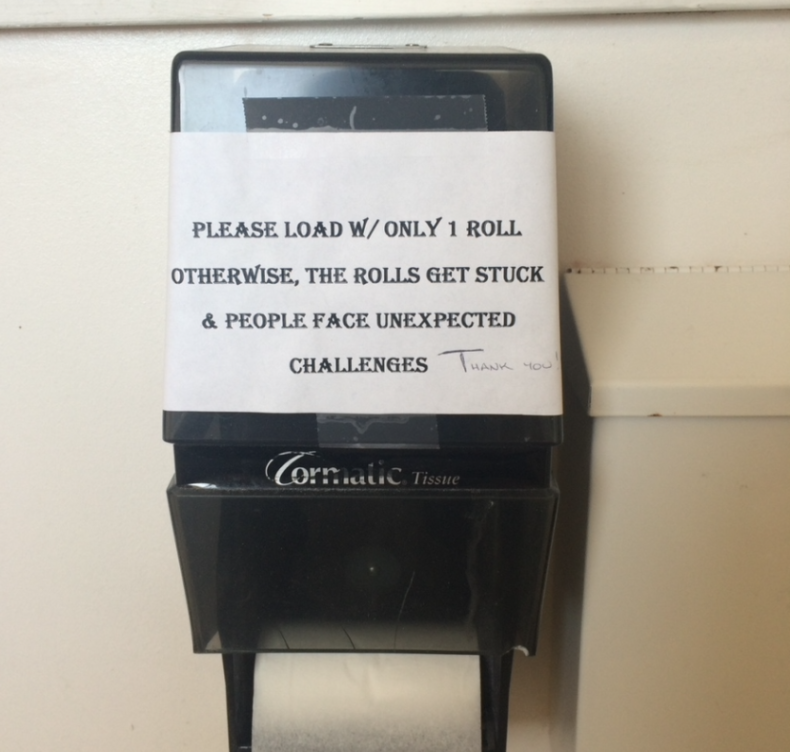
As I’ve moved through life, there are an unimaginable number of things I’ve seen or heard, briefly enjoyed, and then summarily forgotten about. For those of us with awful long-term memory, this is the joy in rereading books: it’s like reading it for the first time. There are things I’d like to remember better, and then there are the insignificant snippets that have inexplicably stuck with me, the things I’ve turned over in my head again and again. (The sign above, for instance, is a rich text I encountered in a former military base bathroom in 2015. I still think about at least quarterly.)
One of those things: a story a friend told me about a statistics class in college. The topic was probability. “I don’t get it,” a classmate said. “Everything is just 50/50; either it happens, or it doesn’t.”
I’d be lying if I said my first instinct wasn’t to laugh. How absurd! Probability is real! We use it all the time! (The assumption that probability is self-evident is why ditzy Karen’s weather forecast in Mean Girls lands: “There’s a 30% chance it’s already raining.”)
But the more I’ve thought about it, the more I understand my friend’s classmate. The factors underlying probability are often invisible, murky. Take coronavirus, for instance; it’s not 50/50 whether you’ll get COVID, but whether your risk level is 90% or 10% depends on a whole slew of factors: the rate of transmission where you live, whether you’re wearing a mask, and if you’re vaccinated, among other things. There are calculators that try to quantify that risk; this one says my county’s current risk level is 36%. This type of data is important for researchers, epidemiologists, public health officials, and other people in a position to make decisions about COVID policy, but what, exactly, are citizens supposed to do with this precise percentage? I’m vaccinated, I try to avoid crowds, I wear a mask indoors, and I wash my hands frequently. I’m not sure what else to do. It feels a bit 50/50; either I’ll get it, or I won’t.
I’ve never met the 50/50 person, and probably never will, but I’ve spent a not insignificant amount of time thinking about what they must be like. It is easy to assume the worst of them or what they represent, just as it is always more comforting to find ways to puff yourself up at someone else’s expense. What an indictment of this country’s math and science education! This type of STEM ignorance is exactly what got us into this whole COVID mess in the first place!
But I have grown to admire this person. I never spoke up in college for fear of looking stupid, and it took me another five years to realize it was ok to ask questions about things I thought I should already know, so I’m impressed that they asked this in class at all. I’m also a little envious of their ability to entertain a world view so rooted in the present. Perhaps by now this person has a more robust understanding of probability, but imagine believing everything is 50/50: wouldn’t that be freeing, in some ways? Imagine the mental calculus you’ve expended trying to determine your odds of getting that job, landing that pitch, getting in a run before it starts raining. Some things are unknowable; others are out of your control. Maybe we’d be better off imagining those things are 50/50: either they will happen, or they won’t.
You’re a fast learner! It took me a LOT longer than 5 years to “realize it was ok to ask questions about things I thought I should already know”!
Then there’s the struggle between probability and possibility. Just because it can happen doesn’t mean it will.
My goodness. So much thought about something with so many unknowable and so much information that only confuses the issue. Do what you can to protect yourself, then mind your own business around others. The bulls…. between people is more destructive than the disease.
I like to think in terms of Murphy’s law, reversed:
Whatever can go right will go right…